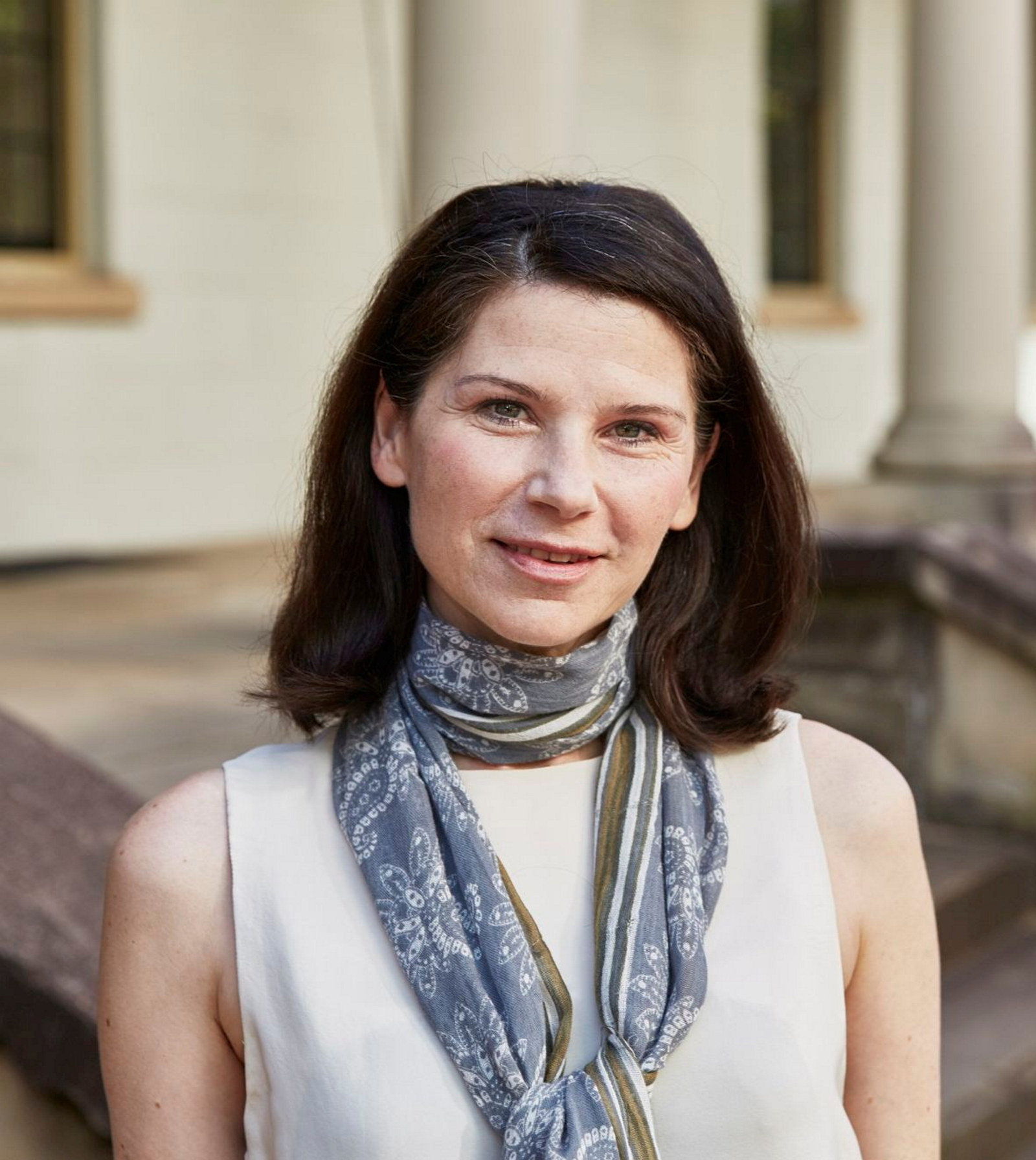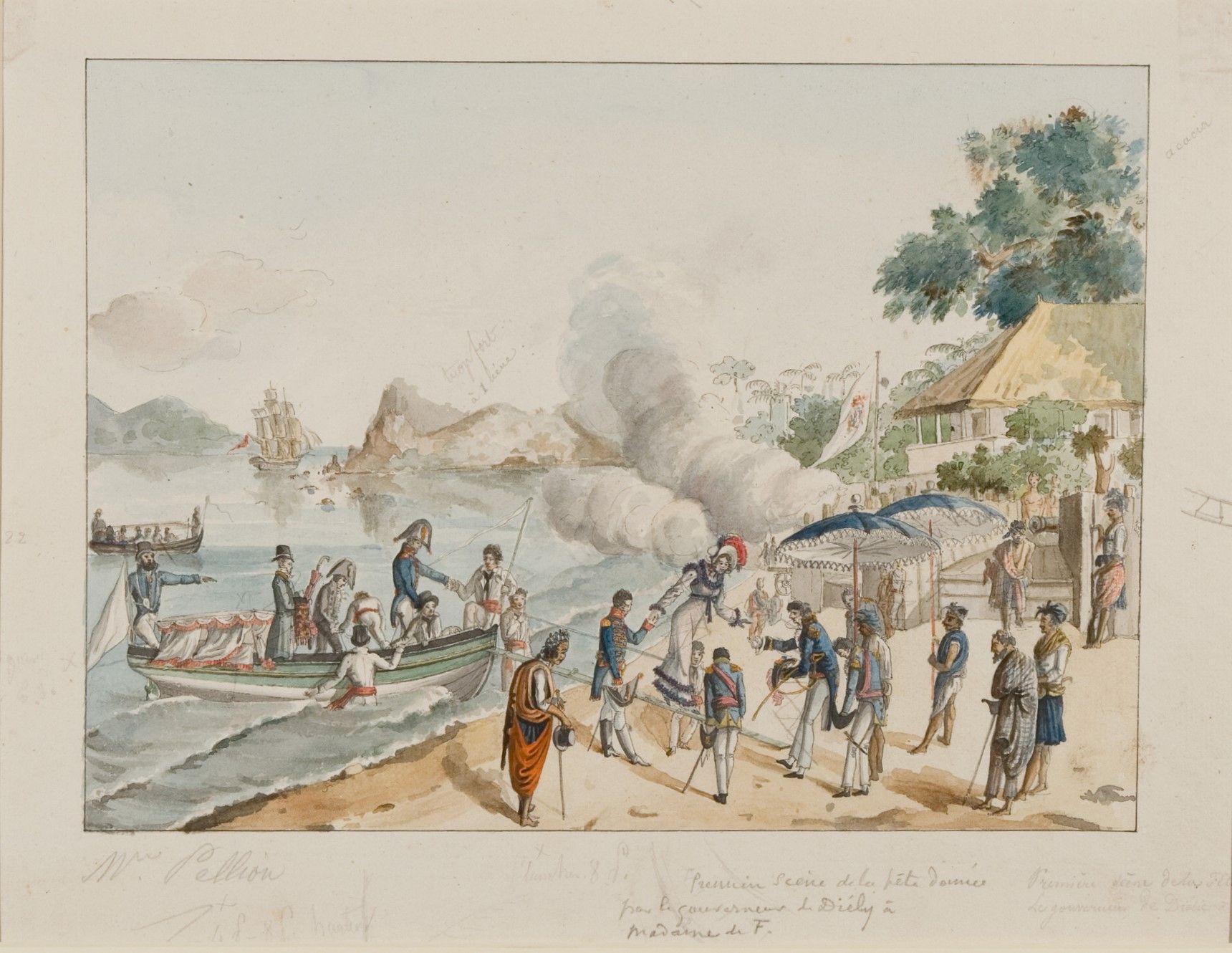Anglo-Indian Workbox
This workbox was a much loved personal home accessory of Anna Elizabeth Walker (1804-1889), the daughter of settler and explorer John Blaxland (1769-1845).
Anna married settler Thomas Walker (1791-1861) in 1823 and moved into Walker’s picturesque stone house, Rhodes, on the Parramatta River at Concord, NSW. Anna and Thomas spent the majority of their married years at a second Rhodes estate in Longford, Tasmania, where Anna had 14 children (eight of which survived). Returning to NSW in 1861 after the death of Thomas, Anna remained at the Concord house with her unmarried daughters Anna (Annie) and Marion until her own death in 1889. Anna had eight grandchildren and nine great grandchildren and the workbox stayed in the family until acquired for the Caroline Simpson Library & Research Collection.
Anglo-Indian work boxes were made in India for English residents from the early 1700s. They were based on European designs and were commercially exported from the late 1700s to the mid-1800s. This octagonal example is typical of those made around 1800. It is made with a sandalwood base that has been veneered with ivory and decorated with engraved borders. The borders are filled with lac - a resin made from the secreted substance of a scale insect - Tachardia Lacca.
The ability to sew and embroider was more than a productive pastime or means of self-expression for women of Anna’s wealthy background, it was also integral to their role as homemakers. Furnishing the house with decorative objects was thought to have a civilising influence that denoted moral standing. It provided warmth and comfort to the family and many subscribed to fashionable journals from England, which provided professional advice and instruction on how to construct, fit and use soft furnishings in the home.
The box was fitted with a removable tray that housed compartments for sewing tools including thread barrels, a tape measure, wax holders, thimbles, reels, rollers for lace and winders that were turned in ivory, bone, mother of pearl and timber.
Anna Walker also kept treasures in the workbox such as coins, medals, beads and baubles, along with invitations, letters and cards she had collected. The underside of the hinged lid displays four oval-shaped miniature aquatints.
The workbox was fitted with a removable tray that housed compartments for sewing tools including thread barrels, tape measure, wax holders, thimbles, reels, rollers for lace and winders that were turned in ivory, bone, mother of pearl and timber.
Sewing boxes at the turn of the century were generally fitted with ivory tools, however mother-of-pearl fittings were also becoming increasingly fashionable and over time, tools and accessories could accumulate in a variety of materials for a multitude of purposes. Assorted needlework tools included ivory clamps; turned timber needle case; carved ivory needle case; ivory netting shuttle wound with silk thread; ivory reel; mother-of-pearl emery cushion; mother-of-pearl winders; part of a carved ivory pincushion and part of a mother-of-pearl pincushion. Early 19th century.
Published on
Related

The Astor, 1923–2023
Upon completion in 1923, The Astor in Sydney's Macquarie Stree twas the largest reinforced concrete building in Australia, the tallest residential block, and this country’s first company title residences

City of Gods, my early experience and toy boat
Inspired by a watercolour of the ruins of the temple of Vishnu, refugee curator in residence Jagath Dheerasekara writes about Devinuvara as a site of pilgrimage, colonisation and uprising

